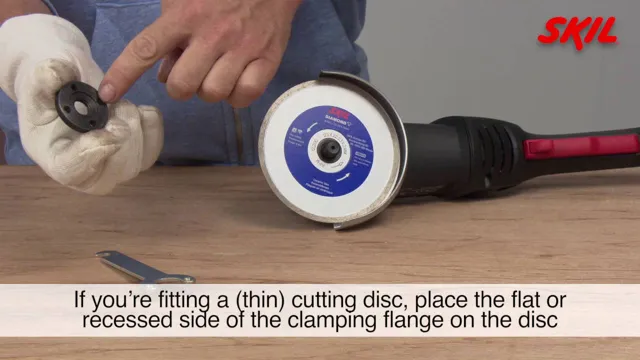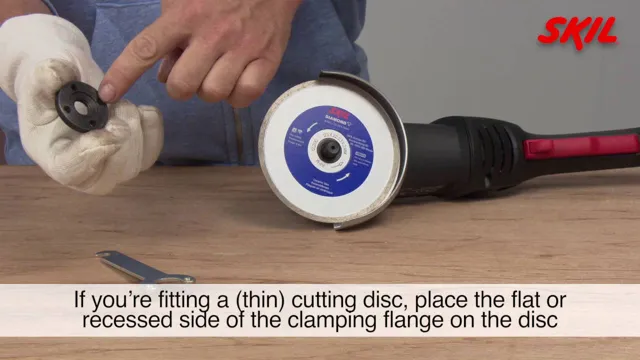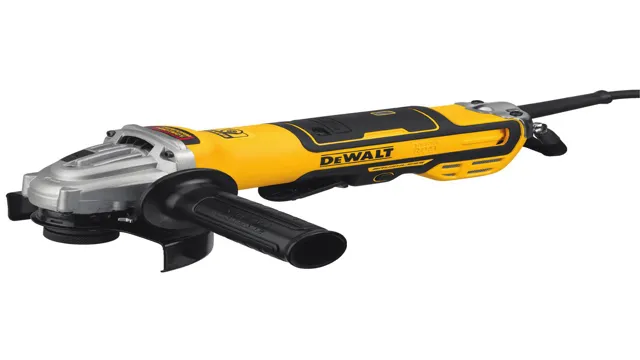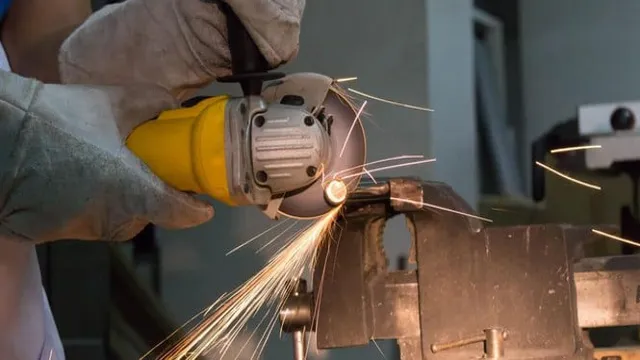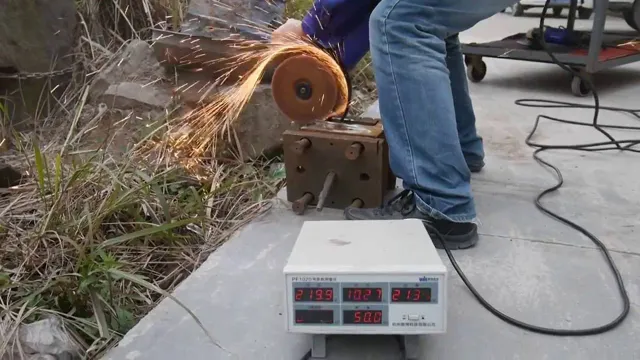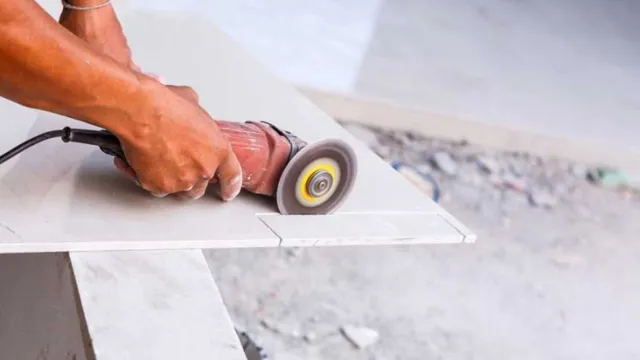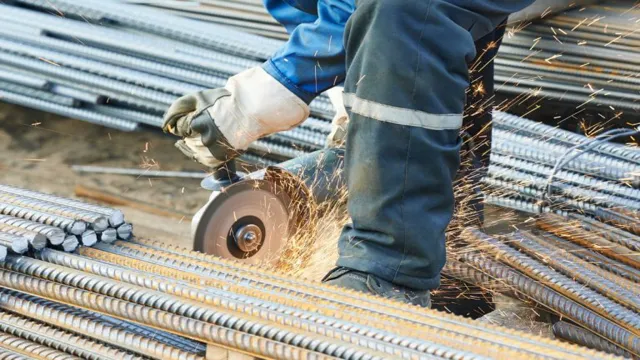What all can you do with an angle grinder? Explore 10 creative uses
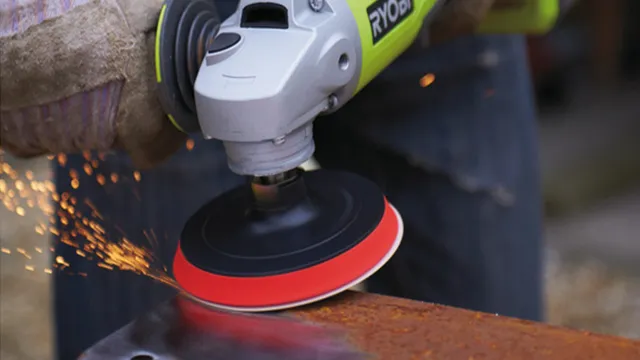
Have you ever wondered what that powerful and intimidating-looking tool in your garage or workshop is for? You know, the one with a spinning disc that emits a shower of sparks? Yes, we are talking about the infamous angle grinder. Despite its slightly menacing appearance, this versatile power tool can be a DIY and DIYer’s best friend when used properly with the proper guidelines, safety measures, and know-how. Mastering the angle grinder can open up a whole new world of potential DIY projects and repairs.
From cutting, sanding, and polishing metal and concrete surfaces to removing rust or stubborn paint, this powerful tool can make even the most laborious of tasks much easier. But, before you start grinding away, it’s essential to understand how to use an angle grinder correctly and safely. The comprehensive guide to mastering the angle grinder is designed to help you understand the tool’s different parts, the types of discs available, and how to select the right one.
You will learn how to mount and use the angle grinder for specific tasks, while also discovering essential safety tips you need to keep in mind. So, whether you are a seasoned DIYer or just starting to explore the joys of DIY projects, this guide will give you the confidence to make the most of your angle grinder and tackle any task with ease. Get ready to unlock the true potential of this incredibly versatile and powerful tool with our comprehensive guide.
What Is an Angle Grinder?
Do you know what all you can do with an angle grinder? Well, an angle grinder is a versatile tool that can be used for a wide variety of purposes, such as cutting, grinding, sanding, and polishing. It typically consists of a motor that drives a spinning abrasive disc or wheel that can be easily adjusted to suit the job at hand. For instance, if you need to cut through metal or concrete, you can use a cutting disc or blade.
On the other hand, if you need to smooth out rough surfaces, you can use a sanding disc or flap. And if you need to remove old paint or rust from metal surfaces, you can use a wire brush. Overall, an angle grinder is an indispensable tool that can help you tackle a diverse range of tasks with ease and precision.
So, whether you’re a DIY enthusiast or a professional contractor, you should definitely consider adding an angle grinder to your toolkit if you haven’t done so already!
Defining the Tool
An angle grinder is a versatile power tool that is commonly used in construction and metalworking projects. It is a handheld device that features a motor-powered abrasive disk or cutting wheel that rotates at high speed, allowing users to cut, grind, sand, polish, and shape various materials. Angle grinders come in a range of sizes, with the most common sizes being
5 inch and 9 inch. They can be powered by a cord or battery, and their speed can be adjusted to suit the task at hand. An angle grinder is a useful tool to have in your workshop or on a job site, and with the right safety precautions, it can be used to achieve impressive results on a variety of projects.
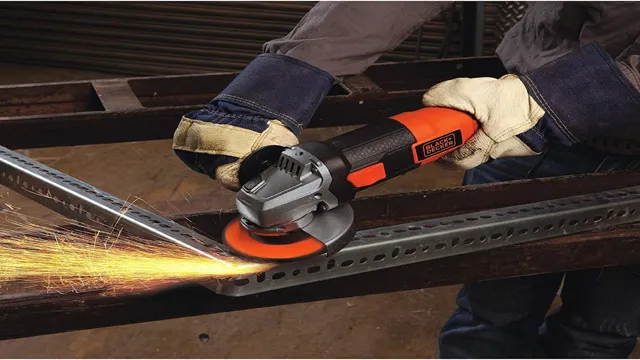
Types of Angle Grinders
An angle grinder is a powerful and versatile tool used to grind, cut, and polish different types of materials such as metal, stone, wood, and tiles. It features a cutting or grinding wheel that rotates at high speeds, enabling the user to make precise cuts or smooth out rough surfaces. There are two types of angle grinders available in the market: corded and cordless.
Corded angle grinders are powered by electricity and have high power output while cordless angle grinders run on batteries and offer greater portability. Depending on the size and type of the wheel, angle grinders come in various sizes, including 5 inches, 7 inches, and 9 inches.
The wheel size determines the depth and speed of the cut or grind. In addition, angle grinders can come with various features such as adjustable guard, variable speeds, and anti-vibration handles, making them suitable for different applications. Whether you’re a DIY enthusiast or a professional tradesperson, an angle grinder is a must-have tool in your arsenal.
Angle Grinder Attachments
Have you ever wondered what all you can do with an angle grinder? Well, wonder no more! Angle grinders are versatile tools that can be used for a wide variety of tasks, thanks to the various attachments that can be added to them. One of the most common attachments is the cutting wheel, which can be used for cutting through metal, tile, and even concrete. Another useful attachment is the flap disc, which is ideal for removing rust or paint from metal surfaces.
Grinding wheels can also be attached to angle grinders, making them perfect for smoothing or shaping surfaces. Additionally, wire wheels can be added, which are great for cleaning and removing rust. With all these attachments, angle grinders can be used for tasks ranging from metalworking to woodworking, and even cleaning up concrete surfaces.
So, go ahead and explore all the different attachments available for your angle grinder – the possibilities are endless!
Blades and Discs for Cutting
Angle Grinder Attachments Angle grinders are versatile tools that can be used for various cutting and grinding tasks. However, their effectiveness is largely determined by the type of blade or disc that is attached to them. Angle grinder attachments come in different shapes and sizes, each designed for a specific purpose.
For instance, diamond blades are perfect for cutting through concrete and masonry, while abrasive discs are suitable for cutting through metal and other materials. Other attachments include wire brushes, sanding discs, and polishing pads, all of which can be used with an angle grinder to achieve different finishes. It is important to choose the right attachment for the task at hand to ensure a safe and efficient working environment.
Always check the label before buying an attachment to ensure that it is suitable for use with your angle grinder. By using the right angle grinder attachments, you can achieve the desired result without compromising on safety or quality.
Wire Brushes for Cleaning and Polishing
Angle grinder attachments are a great addition to your toolbox if you’re looking to take on some heavy-duty cleaning or polishing jobs. Wire brushes are one of the most common attachments used with angle grinders for cleaning and polishing surfaces quickly and efficiently. With their sturdy bristles, wire brushes can handle tough cleaning jobs, including rust, paint, and dirt removal.
They can also be used for light polishing, depending on the type of brush and the surface being cleaned. Depending on the angle grinder you have, you can choose between different styles of wire brushes, including cup brushes, knotted wire brushes, and crimped wire brushes. You can also choose from different sizes and types of wire brushes, depending on the size of the surface being cleaned and the type of material being removed.
Overall, angle grinder attachments like wire brushes are a must-have for anyone looking to tackle cleaning and polishing jobs with ease.
Sanding Discs and Grinding Wheels
Angle grinder attachments are a great addition to any tool collection, especially when it comes to sanding and grinding tasks. With the use of sanding discs and grinding wheels, these attachments can quickly remove rust, paint, and other materials, leaving a clean and smooth surface. However, it’s important to choose the right attachment for the job and to use it properly to avoid any accidents.
Sanding discs are best for smooth and flat surfaces, while grinding wheels are ideal for rough and uneven surfaces. When using angle grinder attachments, always make sure to wear appropriate safety gear such as goggles and gloves, and to never exceed the speed limit marked on the attachment. With the right attachment and cautious usage, angle grinders can make sanding and grinding tasks a breeze.
Projects to Tackle with an Angle Grinder
If you’re looking for a versatile and powerful tool, an angle grinder might just be what you need. With a proper blade and a steady hand, you can use an angle grinder for all sorts of applications. For one, you can use it to cut through metal, concrete, and brick.
This makes it a great tool for construction and renovation projects. You can also use it to clean up rust and paint from metal surfaces. And if you’re feeling creative, you can use an angle grinder to carve intricate patterns from wood or even sculpt stone.
Whatever project you have in mind, an angle grinder can help you get the job done quickly and efficiently. Just be sure to wear appropriate safety gear and follow proper usage guidelines, as these tools can be dangerous in inexperienced hands. So, what all can you do with an angle grinder? The possibilities are endless!
Cutting Metal and Concrete
An angle grinder is a versatile power tool that can help you cut through metal and concrete in no time. One of the best things about angle grinders is that they come with different types of blades or discs, making them suitable for various cutting projects. Whether you’re looking to cut through thick steel or concrete walls, an angle grinder can help you get the job done.
With a diamond blade, you can easily cut through concrete, while a flap disc is perfect for cutting steel or iron. Just make sure you wear the right protective gear, such as safety glasses and gloves, because sparks and debris can fly off while cutting. If you’re new to using an angle grinder, take your time to learn how to handle it correctly to avoid accidents.
Overall, an angle grinder can be a useful tool for cutting metal and concrete in various DIY projects, such as building a shed or creating artwork.
Sharpening Tools and Blades
An angle grinder is a versatile tool that can take on a wide range of projects, including sharpening tools and blades. Whether you’re a DIY enthusiast or a professional tradesperson, an angle grinder can help you get the job done quickly and efficiently. To sharpen tools and blades with an angle grinder, you’ll need to select the appropriate disc for the task at hand.
For example, a diamond-tipped disc is ideal for sharpening the blades of garden tools, while a grinding disc is better suited for sharpening knives and other cutting tools. It’s important to keep the angle of the grinder consistent throughout the sharpening process to ensure a sharp and even edge. With a little practice and patience, you can master the art of sharpening tools and blades with an angle grinder and significantly increase their lifespan.
Safety Tips for Using an Angle Grinder
Angle grinders are incredibly versatile tools that can be used for a variety of tasks. They come with different attachments and wheels that enable them to cut, grind, sand, and polish a wide range of materials such as metal, concrete, tiles, and stone. Angle grinders are ideal for tasks such as cutting through rods and bolts, removing welds, smoothing rough surfaces, and preparing surfaces for painting or sealing.
They also come in handy for grinding and polishing metal tools and sharpening blades. However, it’s important to note that using an angle grinder can be dangerous if not done correctly. Adequate safety measures such as wearing protective gear including gloves, goggles, and a mask are recommended.
Additionally, operators should keep the tool well-maintained and use the correct attachment or wheel for the job. Using an angle grinder effectively will allow for a wide range of tasks and ensure that they are completed quickly and effectively.
Conclusion
In conclusion, an angle grinder is the ultimate multifunctional tool, like the Swiss Army Knife of power tools. From cutting through stubborn metal to sanding rough wood, the angle grinder can handle anything you throw its way. With its versatile range of attachments, you could even use it for carving stone or polishing concrete.
And when the apocalypse hits, the angle grinder will undoubtedly be a go-to tool for survival. So, whether you’re a DIY enthusiast or a seasoned professional, the angle grinder is an essential tool for your arsenal.”
FAQs
What safety precautions should I take while using an angle grinder?
Some safety precautions to take while using an angle grinder include wearing protective gear such as eye and ear protection, gloves, and a face shield, ensuring the grinder is properly grounded, and never putting your hands near the grinding wheel while in use.
Can I use an angle grinder to cut wood?
Yes, you can use an angle grinder to cut wood, but it is important to use the appropriate blade for the job. A wood cutting blade is recommended, as it will be less likely to get stuck and cause kickback.
How do I choose the right disc for my angle grinder?
The disc you choose will depend on the task at hand. Use a cutting disc for cutting metal or concrete, a grinding disc for smoothing and shaping metal or stone, and a sanding disc for smoothing and finishing surfaces.
What is the difference between a corded and cordless angle grinder?
A corded angle grinder requires a power outlet and has a continuous power source, while a cordless angle grinder uses a battery pack for power and is more portable. Corded grinders generally have more power and can handle heavier tasks, while cordless grinders are better for lighter tasks.
Can I use an angle grinder to polish metal?
Yes, you can use an angle grinder to polish metal. Use a polishing wheel attachment and a polishing compound to achieve a smooth and shiny finish.
How do I maintain my angle grinder?
Regularly clean the tool and inspect the power cord for any damage. Keep the grinding wheel and guard free of debris and replace worn or damaged parts immediately to ensure safe and effective use.
Can I use an angle grinder to sharpen tools?
Yes, you can use an angle grinder to sharpen tools such as lawnmower blades, chisels, and knives. Use a sharpening attachment and follow the tool’s cutting edge to maintain its angle and avoid overheating.

